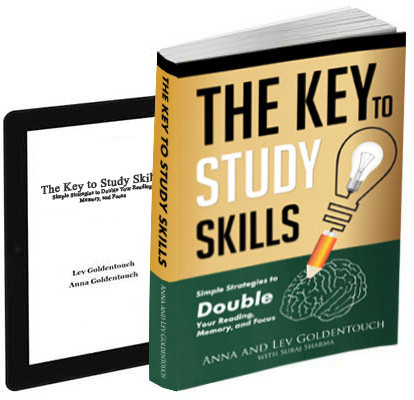In a world overflowing with information, the ability to remember lists and details efficiently can significantly boost productivity and learning. Whether you’re a student trying to memorize dates for a history exam, a professional who needs to keep track of tasks, or someone simply looking to improve memory retention, various techniques can help you achieve your goals. One such method, known as the Pegword method, is a powerful mnemonic tool that has stood the test of time. This article explores the Pegword method in detail, offering insights into how it works, the different types of Peg systems, and practical ways to incorporate this method into your daily life.
What is the Pegword Method?
The Pegword method is a mnemonic device that leverages the use of familiar words or concepts (the “pegs”) to create associations with the information you want to remember. This method involves linking numbers with words that rhyme or have some logical connection, allowing you to “hang” the information on these pegs. Once the associations are formed, recalling the list becomes as simple as remembering the pegs and retrieving the linked information.
The beauty of the Pegword method lies in its simplicity and adaptability. By transforming abstract information into visual or auditory cues tied to familiar words, this method enhances memory retention and recall. It’s especially effective for remembering lists in order, such as grocery items, to-do lists, or even sequences in academic content.
How Does it Work?
At its core, the Pegword method works by converting numbers into words that rhyme or have a meaningful connection, creating a mental image or story that links the peg word with the information you want to remember. Here’s how you can use it:
- Choose a Peg System: Start by selecting a Peg system that suits your preference. The most common systems include the rhyming method, the meaning method, the alphabet method, and the look-alike method.
- Assign Peg Words: For each number in your list, assign a peg word based on your chosen system. For example, if you’re using the rhyming method, the number one might be associated with the word “bun.”
- Create Associations: Visualize the information you want to remember and create a vivid mental image that links it with the peg word. The more bizarre or exaggerated the image, the more memorable it becomes.
- Recall the Information: When you need to recall the list, simply go through the peg words in order and retrieve the associated information from the mental images you created.
The Pegword method is not just about rote memorization; it’s about making connections that make the information meaningful and memorable.
The Many Types of Peg System
The Pegword method isn’t a one-size-fits-all solution. Various types of Peg systems can be tailored to your needs and preferences. Let’s explore some of the most popular ones:
The Rhyming Method (with Examples)
The rhyming method is perhaps the most commonly used Peg system. It relies on pairing numbers with words that rhyme, making them easier to remember. Here’s a basic example:
- One – Bun: Imagine a giant hamburger bun with the first item you need to remember.
- Two – Shoe: Picture the second item inside or attached to a shoe.
- Three – Tree: Visualize the third item hanging from a tree.
- Four – Door: Picture the fourth item behind a door or as part of it.
- Five – Hive: Imagine bees swarming around a hive, and the fifth item is somehow involved.
These simple associations help you remember the items in sequence. For instance, if you’re trying to remember a list that includes “bread,” you might visualize a loaf of bread inside a hamburger bun for “One – Bun.”
The Meaning Method (with Examples)
The meaning method goes beyond simple rhyming and involves creating meaningful connections between the number and the word. This method can be particularly effective when the peg word has a logical relationship with the number or the concept you’re trying to remember. Here’s how it works:
- One – Sun: The sun is often seen as the singular, most important object in the sky, making it a fitting peg for “one.”
- Two – Twins: Twins naturally come in pairs, which makes them an intuitive association for “two.”
- Three – Triangle: A triangle has three sides, making it a logical peg for “three.”
- Four – Quadrant: A quadrant divides a space into four sections, making it suitable for “four.”
- Five – Fingers: Humans typically have five fingers on one hand, so “fingers” is a natural peg for “five.”
In this method, the connections are more logical and less arbitrary, which can help in creating stronger mental images for some people.
The Alphabet Method (with Examples)
The alphabet method involves using the letters of the alphabet as pegs. This method is useful when you have lists that don’t involve numbers or when you’re working with a sequence that isn’t numerical. Here’s how you can use it:
- A – Apple: Imagine an apple representing the first item in your list.
- B – Banana: Picture a banana associated with the second item.
- C – Cat: Visualize a cat interacting with the third item.
- D – Dog: Imagine a dog involved with the fourth item.
- E – Elephant: Picture an elephant and the fifth item together.
This method is particularly helpful for remembering lists where items are associated with specific letters, such as vocabulary words, names, or categories.
The Look-Alike Method (with Examples)
The look-alike method leverages visual similarities between numbers and objects to create pegs. This method is highly visual and can be very effective for people who think in pictures. Here are some examples:
- One – Candle: The number one looks like a candle, so you might visualize the first item being illuminated by a candle.
- Two – Swan: The number two resembles a swan, so picture a swan interacting with the second item.
- Three – Ears: The number three can be imagined as a pair of ears, with the third item being heard by them.
- Four – Chair: The number four looks like a chair, so you might imagine sitting the fourth item on it.
- Five – Hook: The number five can be seen as a hook, so you might visualize hanging the fifth item on it.
This method is particularly engaging because it relies on the natural shapes of numbers to create memorable images.
5 Ways To Practice The Pegword Method
Practicing the Pegword method regularly can enhance your ability to remember lists and information effectively. Here are five ways to integrate this technique into your routine:
- Daily To-Do Lists: Start your day by creating a to-do list and use the Pegword method to remember it. As you go through your day, recall the list without checking it, relying on your mental pegs instead.
- Grocery Shopping: Before heading to the store, list the items you need to buy and create associations using the Pegword method. This not only helps you remember the items but also makes shopping more fun.
- Learning New Vocabulary: Use the Pegword method to memorize new words. For example, if you’re learning a new language, you can associate the foreign word with a peg word in your native language that sounds similar.
- Memorizing Phone Numbers: Break down long phone numbers into smaller segments and create peg associations for each segment. This method can be particularly useful for memorizing numbers without writing them down.
- Studying for Exams: Use the Pegword method to memorize sequences, dates, or lists of concepts for exams. This method can make studying more efficient and reduce the stress of cramming.
Regular practice of these techniques can make the Pegword method second nature, allowing you to remember information effortlessly.
How Will You Use the Pegword Method?
The versatility of the Pegword method means it can be adapted to various scenarios, whether personal or professional. Here are some ways you might use it:
- In the Workplace: Use the Pegword method to remember meeting agendas, project steps, or client details without constantly referring to notes.
- For Personal Development: Improve your memory for hobbies like cooking, gardening, or crafting by memorizing steps or ingredients using the Pegword method.
- In Social Situations: Impress friends and colleagues by remembering names, birthdays, or conversation details using the Pegword method.
The key is to find creative ways to integrate this method into your daily life, making it a tool that enhances both your personal and professional endeavors.
Pegword Method in the Classroom
The Pegword method can be particularly beneficial in educational settings, helping students of all ages retain information more effectively. Here’s how educators can use it:
- Vocabulary Building: Teachers can introduce the Pegword method to help students memorize vocabulary words. By associating new words with familiar peg words, students can enhance their language skills.
- History and Dates: Memorizing historical dates can be challenging, but using the Pegword method, students can create associations that make remembering dates easier and more engaging.
- Mathematics and Formulas: In subjects like math, where formulas and sequences are crucial, the Pegword method can help students memorize these elements more effectively.
- Spelling and Phonetics: For younger students, the Pegword method can assist in learning spelling and phonetics by creating associations with letters and sounds.
- Group Activities: Teachers can incorporate the Pegword method into group activities, encouraging students to work together to create peg associations, making learning a collaborative and enjoyable process.
By introducing the Pegword method in the classroom, educators can provide students with a valuable tool that enhances memory and makes learning more interactive.
Conclusion
The Pegword method is a versatile and powerful mnemonic tool that can transform the way you remember lists and information. Whether you’re using the rhyming method, the meaning method, the alphabet method, or the look-alike method, the key lies in creating vivid, memorable associations that make recalling information effortless. By practicing this method regularly, you can improve your memory, boost productivity, and make learning a more engaging experience.
From daily to-do lists to classroom learning, the Pegword method offers endless possibilities for enhancing memory retention. By integrating it into your daily routine, you can unlock your brain’s full potential and gain a competitive edge in both personal and professional settings. As you continue to practice and refine this technique, you’ll discover just how powerful and transformative the Pegword method can be.

Get 4 Free Sample Chapters of the Key To Study Book
Get access to advanced training, and a selection of free apps to train your reading speed and visual memory

